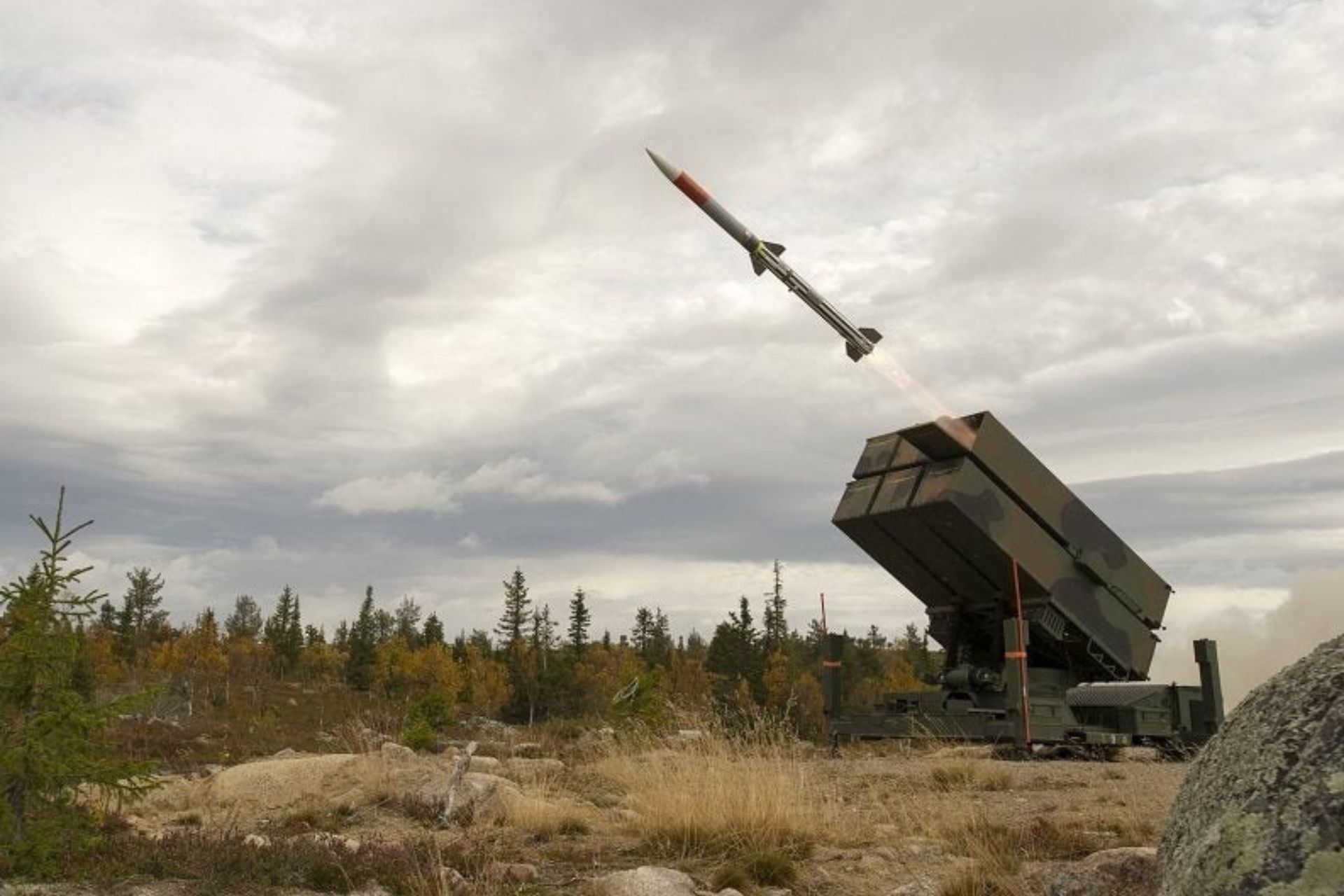Breaking News
US Announces New $200 Million Aid Package for Ukraine Including NASAMS and Artillery Munitions.
On July 29, 2024, the Department of Defense (DoD) unveiled new security assistance measures to address Ukraine's critical security and defense needs. This includes a Presidential Drawdown Authority (PDA) package valued at up to $200 million, which will provide Ukraine with essential capabilities such as air defense interceptors, munitions for rocket systems and artillery, and anti-tank weapons.
Follow Army Recognition on Google News at this link

The NASAMS is designed to protect against various aerial threats, including aircraft, drones, and missiles, using AIM-120 AMRAAM missiles (Picture source: Raytheon)
In addition to the PDA package, the DoD announced a substantial support package using approximately $1.5 billion from the Ukraine Security Assistance Initiative (USAI) funds. This package aims to enhance Ukraine's air defenses, firepower, and anti-tank capabilities and provide funding to sustain equipment previously committed by the United States.
The new assistance includes munitions for National Advanced Surface-to-Air Missile Systems (NASAMS), short- and medium-range air defense munitions, RIM-7 missiles for air defense, and electronic warfare equipment. Additionally, it comprises ammunition for High Mobility Artillery Rocket Systems (HIMARS), 155mm and 105mm artillery rounds, 120mm mortar rounds, precision aerial munitions, and Tube-Launched, Optically-Tracked, Wire-Guided (TOW) missiles. Anti-armor systems such as Javelin and AT-4, small arms, explosives, demolitions equipment, and secure communications systems are also included. Furthermore, the package provides commercial satellite imagery services, spare parts, maintenance and sustainment support, and other ancillary equipment.
The National Advanced Surface-to-Air Missile System (NASAMS) is a highly adaptable medium-range air defense system developed by Kongsberg Defence & Aerospace and Raytheon Technologies. The system was first introduced in the mid-1990s, with Norway being the first country to deploy it in 1998. NASAMS is designed to protect against various aerial threats, including aircraft, drones, and missiles, using AIM-120 AMRAAM missiles. The system integrates advanced radar and fire control solutions, providing a robust and flexible air defense capability. Several countries, including Norway, the United States, Spain, and the Netherlands, currently have NASAMS in service, with varying numbers of units.
NASAMS offers significant capabilities such as network-centric operations, allowing integration with other defense systems and command structures. It can engage multiple targets simultaneously at ranges up to 25 kilometers and altitudes up to 16 kilometers. The system's mobility and modularity enable rapid deployment and adaptation to different threat environments, making it a valuable asset for modern air defense.
This marks the Biden Administration's twentieth USAI package and the sixty-second tranche of equipment provided from DoD inventories for Ukraine since August 2021. The United States continues to collaborate with approximately 50 allies and partners to ensure that Ukraine's defenders receive the critical capabilities necessary to combat Russian aggression.
Ukraine faces numerous difficulties in its war against Russia, particularly regarding the supply of artillery munitions and the establishment of sufficient air defenses. Ukrainian forces, engaged in intense combat, struggle to maintain a steady flow of munitions necessary for their artillery systems, a crucial element for resisting Russian offensives and supporting their own military operations. This shortage is exacerbated by limited logistical infrastructure and insufficient local production capacities to meet demand.
Additionally, Ukraine battles to bolster its air defenses to counter Russian missiles and bombings. The current systems, though effective, are often insufficient in number and require constant technological updates to keep pace with the increasing sophistication of Russian aerial attacks. This situation exposes strategic and civilian areas to heightened risks, further complicating the country's overall defense efforts.


























